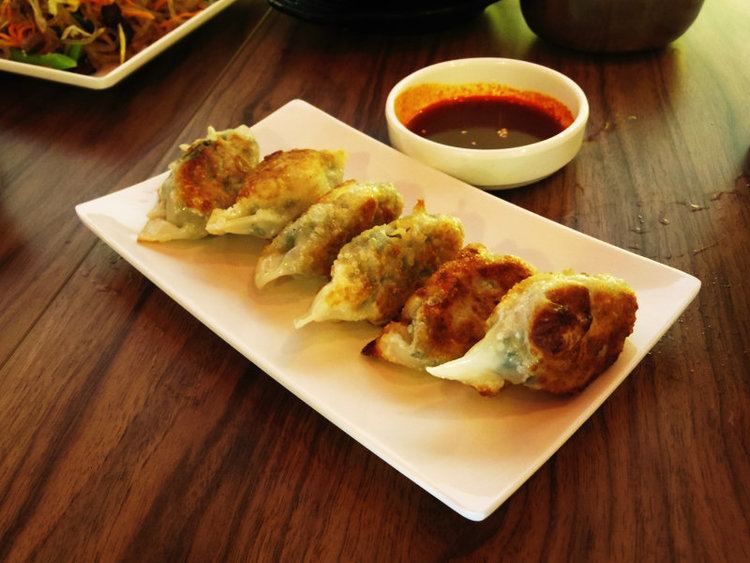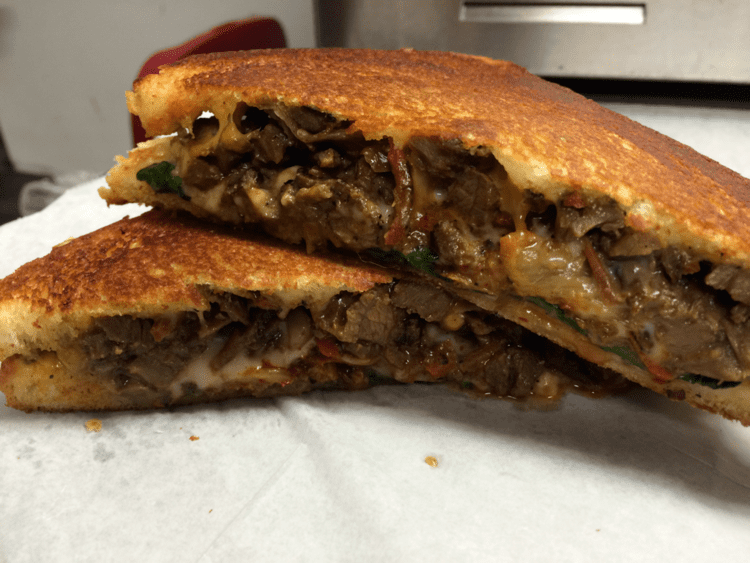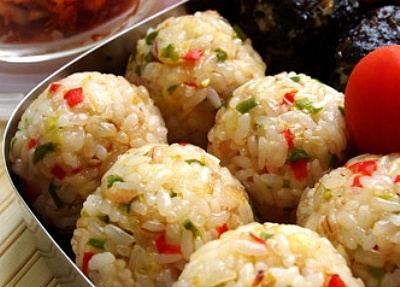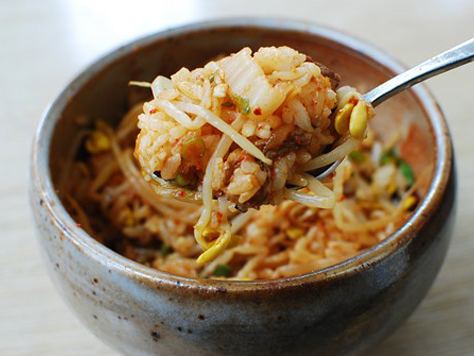Place of origin Korea | ||
 | ||
Main ingredients Rice and/or other grains Similar Bibimbap, Juk, Korean noodles, Kimchi fried rice, Bulgogi | ||
Bap (밥), often translated as "rice" or "cooked rice", is a term used to describe boiling rice and/or other grains until the water has cooked away. The word can also be used to refer to a meal. The honorific forms of bap include jinji (진지) for an elderly, sura (수라) for the monarch, and me (메) for the deceased (in the ancestral rites).
Contents

In Korean cuisine, bap is made from either white Japonica rice, or rice mixed with other grains such as black rice, barley, sorghum, various millets and beans. Special ingredients such as vegetables, seafood, and meat can also be added to create different kinds of bap.

Preparation

Traditionally, bap was made using gamasot (a cast iron cauldron) for a large family, however in modern times an electronic rice cooker is usually used to cook rice. Regular heavy-bottomed pot or dolsot (stone pot) can also be used. Nowadays, rice cooked in gamasot or dolsot are called sotbap, and are considered as delicacies. More nurungji (scorched rice) is produced when making gamasotbap (cast iron cauldron rice) and dolsotbap (stone pot rice).

To make bap, rice is scrubbed in water and rinsed several times. This process produces tteumul (water from the last washing of rice). It is then soaked for thirty minutes before boiling, which helps the grains cook evenly. With unpolished brown rice and bigger grains such as Job's tears, it is necessary to soak the grains for several hours to overnight to avoid under-cooking. The grains are then cooked. In a regular heavy bottomed pot, rice can be cooked over medium high heat with the lid on for about ten minutes, stirred, and then left to simmer on low heat for additional five to ten minutes.

The scorched rice in the bottom of the pot or cauldron, nurungji, can be eaten as snacks or used to make sungnyung (an infusion made from boiling scorched rice).
Rice
The most basic bap made of rice is called ssalbap (쌀밥, "rice bap"), or often just bap. As rice itself occurs in colours other than white, the bap made of all white rice is called huinssal-bap (흰쌀밥, "white rice bap") or ssalbap. When black rice is mixed, it is called heungmi-bap (흑미밥, "black rice bap").
When cooked with all brown rice (unpolished rice) or white rice mixed with brown rice, it is called hyeonmi-bap (현미밥, "brown rice bap"), while bap cooked with all glutinous rice or white rice mixed with glutinous rice is called chapssal-bap (찹쌀밥, "glutinous rice bap"). Unpolished glutinous rice can also be used to cook bap, in which case it is called hyeonmi-chapssal-bap (현미찹쌀밥, "brown glutinous rice bap").
Bap made of regular non-glutinous white rice (polished rice) can be referred to as baekmi-bap (백미밥, "white rice bap") when compared to hyeonmibap, and as mepssal-bap (멥쌀밥, "non-glutinous rice bap") when compared to chalbap/chapssalbap.
Rice and/or other grains
Bap made of rice mixed with various other grains is called japgok-bap (잡곡밥, "multi-grain rice"). On the day of Daeboreum, the first full moon of the year, Koreans eat ogok-bap (오곡밥, "five-grain rice") made of glutinous rice, proso millet, sorghum, black beans, and red bean, or chalbap (찰밥, "sticky rice") made of glutinous rice, red bean, chestnut, jujube, and black beans.
When rice is mixed with one other grain, the bap is named after the mixed ingredient. The examples are:
Some grains can be cooked without rice. Bap made of barley without rice is called kkong-bori-bap (꽁보리밥), while bap made of both rice and barley is called bori-bap (보리밥).
Special ingredients
Byeolmi-bap (별미밥, "special delicacy rice") or byeolbap (별밥, "special rice") can be made by mixing in special ingredients such as vegetables, seafood, and meat. For example, namul-bap (나물밥, "namul rice") is made of rice mixed with namul vegetables. Some popular byeolmibap varieties include:
